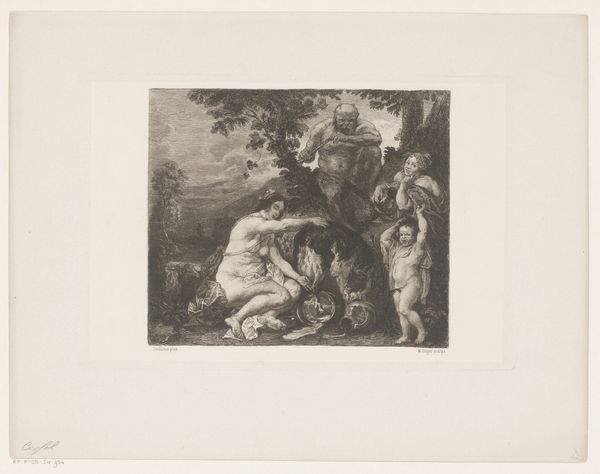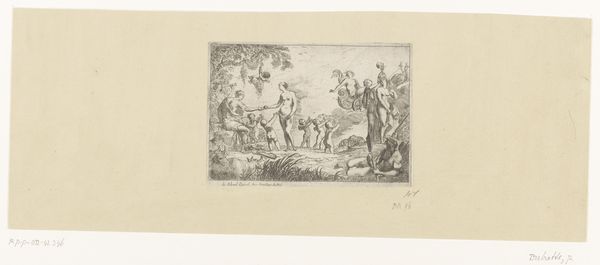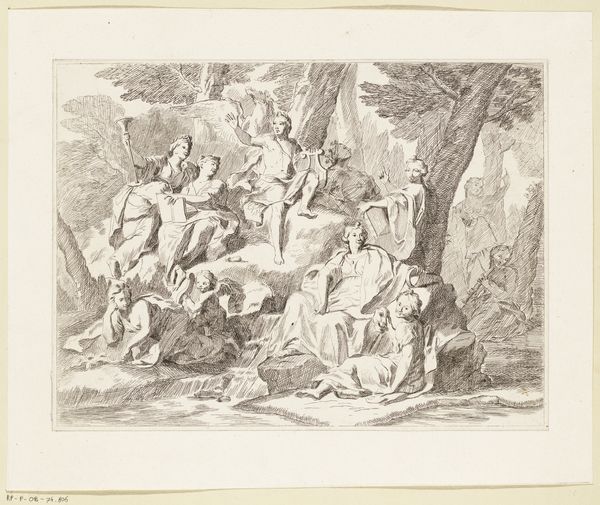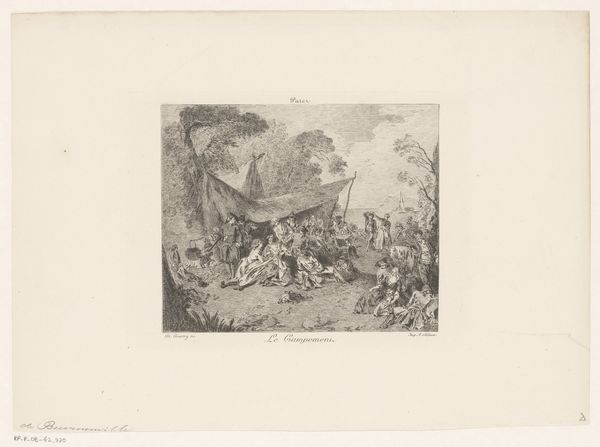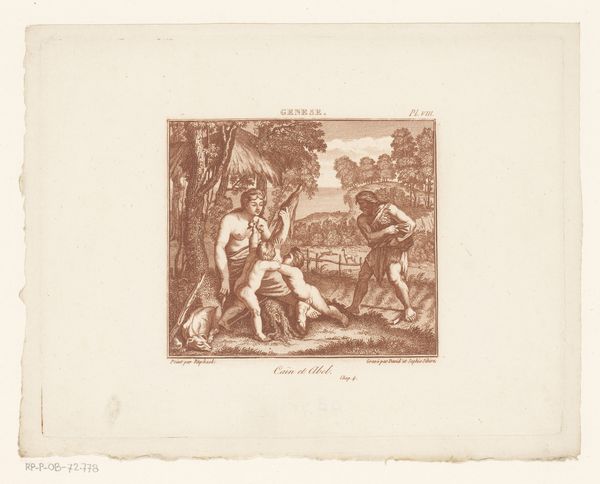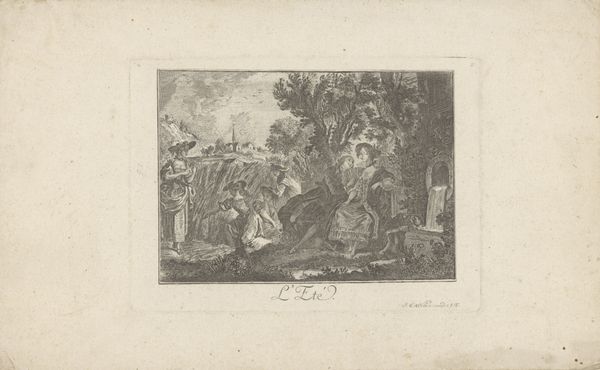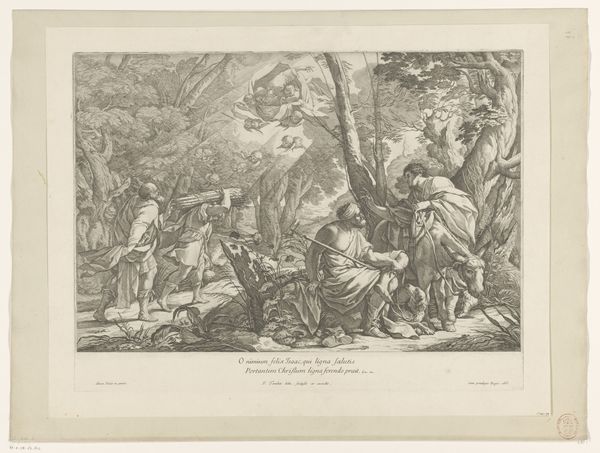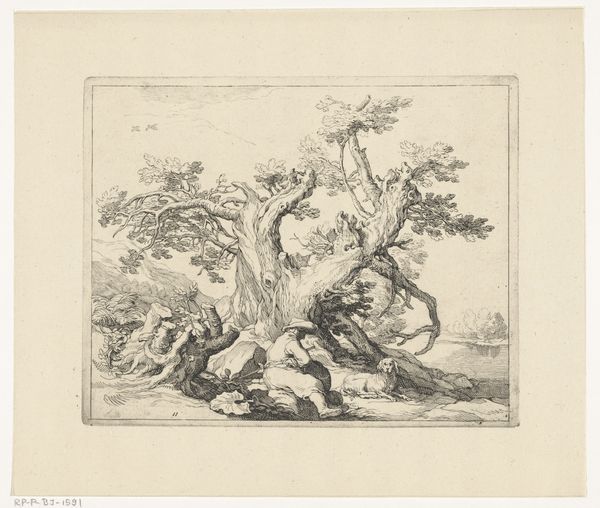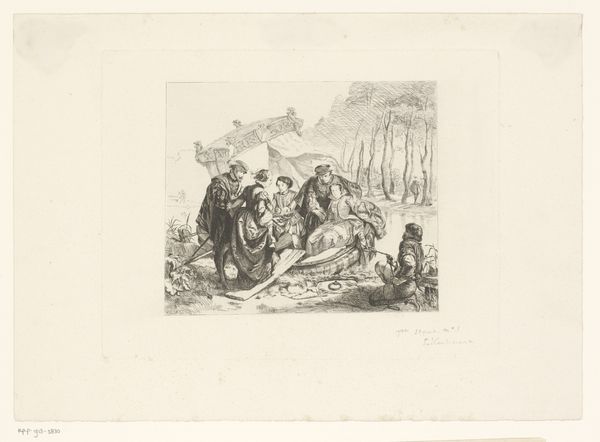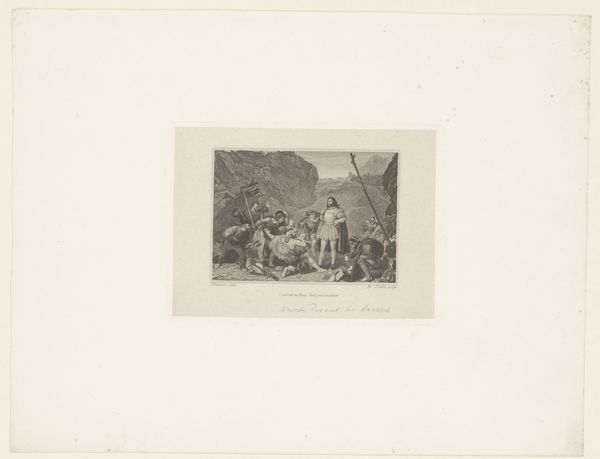
Dimensions: height 272 mm, width 232 mm
Copyright: Rijks Museum: Open Domain
Curator: What strikes me first is the overwhelming sense of turmoil and struggle. The swirling lines create a chaotic composition. Editor: Exactly. We are looking at Christian Bernhard Rode’s etching, “Achilles fighting the river gods Scamander and Simois,” created in 1768. It is currently held at the Rijksmuseum. Rode vividly captures a moment of intense conflict taken from the Trojan War epic. Curator: Conflict, absolutely. There's something performative about the way Achilles wields his sword. Is he battling these river gods, or enacting a kind of dominance, imposing himself on the natural world? Editor: That's a crucial question. Remember, historical context matters: during this era, depictions of ancient heroes served specific functions, reinforcing ideals of masculine power and rational control. Rode seems to buy into that wholeheartedly. The scene romanticizes warfare. Achilles, with his idealized physique, embodies valor and the heroic archetype, while the river gods—personifications of untamed nature—are subjugated. Curator: But I see complexity here. Look at the lines, the ways the water god is humanized, his defeat seeming poignant. The artist manages a tension, almost as though sympathizing with the defeated as victims of human conquest and territorial greed. Editor: A fair point, but sympathy can itself be a narrative tool. Think about how such imagery might reinforce colonial power structures by glorifying military campaigns. Are we, even today, conditioned to see this "conquest" as heroic when it's actually tragic? The bodies lying limp, drowned, hint at the brutal costs erased in grand historical narratives. Curator: True. Museums shape historical perception by exhibiting these interpretations. The choice to showcase such artwork invites examination into our present cultural ideals of valor versus destructive exploitation of the environment. This image provides a historical reflection of the socio-political narrative through the aesthetic. Editor: Which invites the question, what message should be conveyed in an era increasingly focused on social justice? Ultimately, Rode’s “Achilles” asks viewers to question traditional portrayals of conflict, power, and representation itself. Curator: Indeed. Seeing art from the past is important because it offers a lens to reflect and question how cultural values evolve, shaping a future with consideration of different viewpoints.
Comments
No comments
Be the first to comment and join the conversation on the ultimate creative platform.
